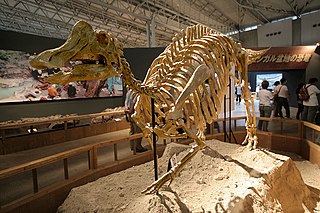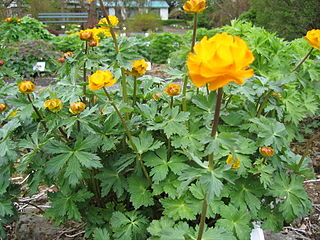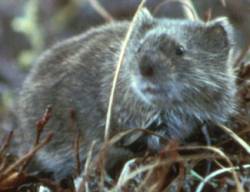
Cambaroides is a genus of freshwater crayfish from eastern Asia. Together with Pontastacus, they are the only crayfish native to Asia. Cambaroides contains about six species:

Nipponosaurus is a lambeosaurine hadrosaur from sediments of the Yezo Group, in Sinegorsk on the island of Sakhalin, which was part of Japan at the time of the species' classification. The type and only species is N. sachalinensis, known only from a single juvenile specimen discovered in 1934 and named in 1936, by Takumi Nagao, with further material of the same individual found in 1937. Since then, the taxon has been largely ignored, and its validity has been doubted, with synonymy with other Asian hadrosaurs or status as a nomen dubium being suggested. Redescriptions from 2004 and 2017, however, have supported recognition as a distinct species. Dating the only specimen has been difficult, but based on associated mollusc taxa, the species likely lived sometime in the upper Santonian or lower Campanian, around 80 million years ago.
Vipera berus sachalinensis is a viper subspecies endemic to Asia. Like all other vipers, it is venomous.

Trollius altaicus is an ornamental plant of the family Ranunculaceae, native to an area from Central Asia east to Japan and Sakhalin. This plant usually grows in wet places, especially in valleys.

Reynoutria sachalinensis is a species of Fallopia native to northeastern Asia in northern Japan and the far east of Russia.
The Sakhalin vole is a species of rodent in the family Cricetidae. It is found only in Russia.

Abies sachalinensis, the Sakhalin fir, is a species of conifer in the family Pinaceae. It is found in Sakhalin island and southern Kurils (Russia), and also in northern Hokkaido (Japan). The first discovery by a European was by Carl Friedrich Schmidt (1832-1908), the Baltic German botanist, on the Russian island of Sakhalin in 1866, but he did not introduce it to Europe. The plant was re-discovered by the English plant-collector, Charles Maries in 1877 near Aomori on the main Japanese island of Honshū, who initially thought it to be a variety of Abies veitchii. Abies nephrolepis is known to be the closest relative, which exists on the mainland just west of the range of Sakhalin fir.

Alexandromys is a genus of voles in the subfamily Arvicolinae, formerly a subgenus of the genus Microtus. Species in this genus are:
The Ryugase Group is a geological formation on Sakhalin Island in far eastern Russia whose strata date back to the Late Cretaceous.

Liparis loeselii, the fen orchid, yellow widelip orchid, or bog twayblade, is a species of orchid. It is native to Europe, northern Asia, the eastern United States, and eastern Canada. It grows in fens, bogs and dune slacks. It has yellow flowers and glossy yellow-green leaves.
- Liparis loeselii subsp. loeselii - Europe, Russia, Kazakhstan, Canada, United States
- Liparis loeselii subsp. orientalisEfimov - Altay region of Russia
- Liparis loeselii subsp. sachalinensis(Nakai) Efimov - Sakhalin Island in Russia
Asthena sachalinensis is a moth in the family Geometridae. It is found on Sakhalin, the Kuriles and in Japan.

Tongeia fischeri, or Fischer's blue, is a butterfly of the family Lycaenidae. It was described by Eduard Friedrich Eversmann in 1843. It is found in south-eastern Europe, the southern Ural, northern and eastern Kazakhstan, south-western and southern Siberia, the Russian Far East, Mongolia, China, Korea and Japan.
Prochoreutis sachalinensis is a moth in the family Choreutidae. It was described by Aleksandr Sergeievich Danilevsky in 1969. It is found on Sakhalin Island and in the Russian Far East and Hunan, China.

Spisula sachalinensis, the Sakhalin surf clam, is a species of edible saltwater clam in the family Mactridae, the surf clams or trough clams. It is commonly referred to as surf clam or Arctic surf clam, though the latter can also refer to the closely related Mactromeris polynyma.
Arnica sachalinensis is an Asian species of flowering plant in the family Asteraceae. It is native to Sakhalin Island on the Pacific Coast of Russia.
Pseudaspius sachalinensis is a species of fish in the family Cyprinidae. It is endemic to Japan and Sakhalin.

The South Sakhalin-Kurile mixed forests ecoregion is split between the southwest region of Sakhalin Island, and the southern three islands of the Kurile Islands chain in the Russian Far East. The ecoregion is in the Palearctic realm, with a Humid Continental climate. It covers 12,432 km2 (4,800 sq mi).

Euonymus sachalinensis, the flat-stalked spindle, is a species of flowering plant in the family Celastraceae, native to Japan, China, Korea, and the Island of Sakhalin. Growing to 2.5 m (8.2 ft) tall and broad, it is a deciduous shrub notable for its leaves turning red in autumn, and its red fruit which splits open to reveal orange seeds. Exceptional specimens, such as the one in the Hørsholm Arboretum, Copenhagen University, can become trees up to 4 m (13 ft) in height.
Bacidia sachalinensis is a little-known species of corticolous (bark-dwelling) lichen in the family Ramalinaceae. Found in the Russian Far East, it was formally described as a new species in 2018 by Julia Gerasimova, Aleksandr Ezhkin, and Andreas Beck. The type specimen was collected by the second author near the Rogatka River in Yuzhno-Sakhalinsk, where it was found growing on the bark of Populus maximowiczii in a floodplain forest; it has only been documented from this location. The species epithet refers to its type locality.










